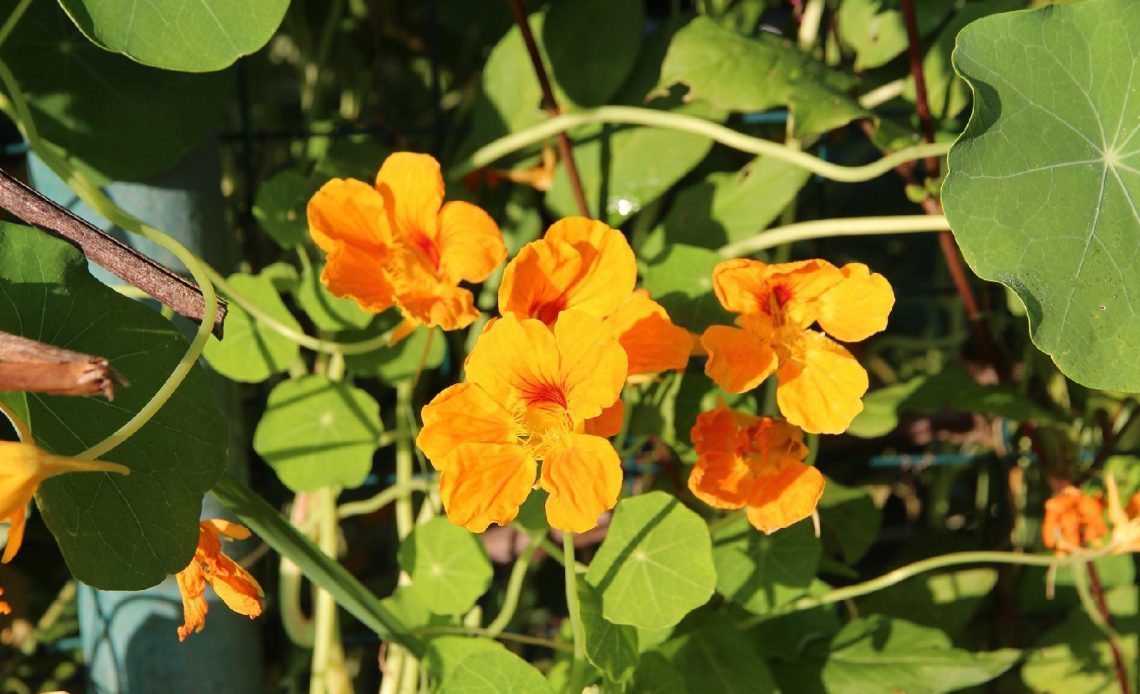

We’re here to help! Wild Yards is a completely free website that is 100% dedicated to helping you create a wildlife-friendly, sustainable yard. Read more
WildYards is reader-supported. When you buy a product through a link on our site, we may earn a comission. Every product is independently selected by our (obsessive) editors and our reviews are unbiased and objective. Read more about our mission or our privacy policy.
Transform your raised vegetable garden into an ornamental flower bed with fast-growing nasturtiums. These showy blooms make a gorgeous focal point, but they’re also edible and can help deter harmful insects, making them an excellent choice for backyard gardeners. If you’re new to gardening or don’t have experience with nasturtiums, you may be wondering what’s the best way to use nasturtium companion plants?
Companion planting with nasturtiums improves the ecosystem of your entire garden. Nasturtiums work to fend off damaging insects, and nasturtium companion plants help improve this plant’s performance.
Why are nasturtiums good companion plants?
Nasturtiums have a strange odor that makes them an effective all-natural pesticide. Some bugs, like aphids, are drawn to this scent. They’ll gravitate toward your nasturtiums, sparing your vegetable plants. But other bugs, like cabbage loopers and squash bugs, are confused by the flowers’ strong smell, so they usually fly away to look for food elsewhere.
In addition to keeping the populations of undesirable insects down, nasturtiums can help drum-up pollinators’ interest in your flowering plants. Bees, butterflies, and hummingbirds love to peruse nasturtium flowers. Keeping these plants near your garden increases the chances that these pollinators will visit your vegetables. Good pollination is critical to crop production.
On top of all of this, nasturtiums improve growing conditions for neighboring plants. The roots break up the soil, improving aeration. And the cascading leaves and branches provide shade to keep the soil cool and moist. Whether you grow them between rows or around the perimeter of your raised beds, nasturtiums have a lot to offer your garden.
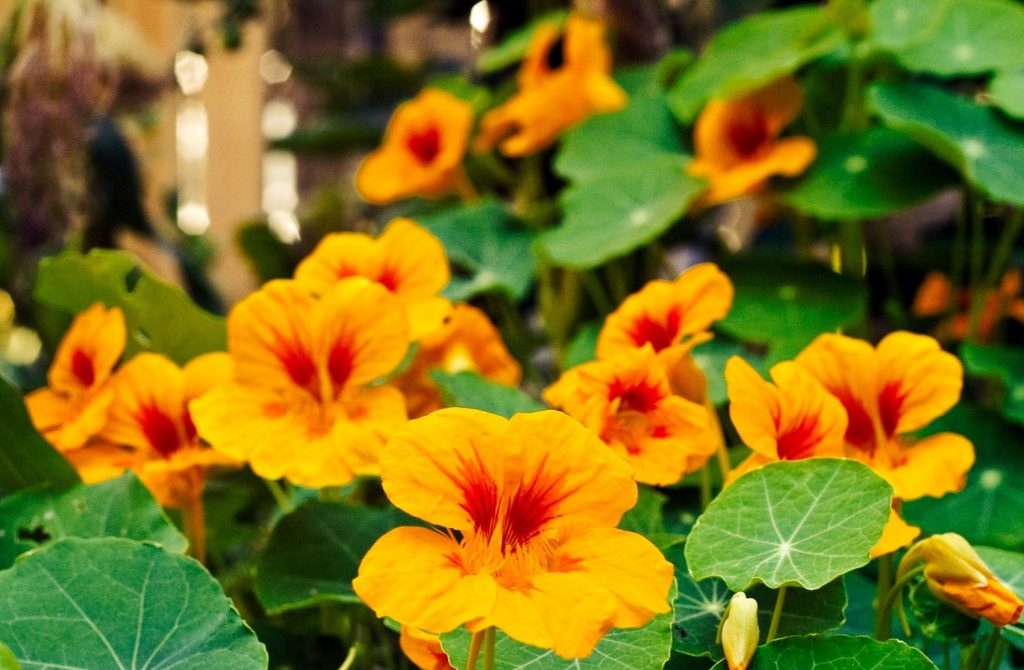
What’s the best way to grow nasturtiums as companion plants?
Nasturtium companion plants create multiple symbiotic relationships within your garden. These plants are wonderful for attracting pollinators and deterring pests from raiding your vegetables of their foliage and fruits. But nasturtiums work best when they’re grown as a trap crop.
Trap crops are plants that insects like to eat. They’re grown as companions for more valuable plants to keep pests from destroying the produce. Many insects find nasturtiums to be a better alternative than fruits and vegetables and prefer to nibble on them, instead. Indeed, insects that were born in nasturtium plants consistently choose to eat them over other plants.
To grow nasturtiums as a trap crop, plant them near the plants your local insects prefer to eat. Just be sure to grow them in well-drained soil in a sunny location that receives some afternoon shade. Keeping your nasturtiums healthy enables them to grow as quickly as possible so they can keep pests off your vegetables until they’re ready to be harvested.
What are the best companion plants to grow with your nasturtiums?
Nasturtiums are so easygoing that they can be grown as a companion to just about any plant you can imagine. The only plant you should avoid planting nasturtiums with is fennel, which is pretty picky and doesn’t really like to be planted near anything else.
While you can grow your nasturtiums near most plants without much fuss, here are some of the best nasturtium companion plants to help you get started. The following plants are ones that grow better when nasturtiums are planted nearby, or that encourage nasturtiums to grow better themselves.
Pumpkin
After months of cultivating your pumpkin patch, the last thing you want is to see it fall prey to striped pumpkin beetles. These little bugs can make short work of your pumpkin plants. But growing nasturtiums nearby can help.
Nasturtiums attract predatory wasps and hoverflies, two insects that prey on striped pumpkin beetles and their larvae. These plants work well as companions for pumpkins because they can fill in around pumpkin vines without being smothered by them.
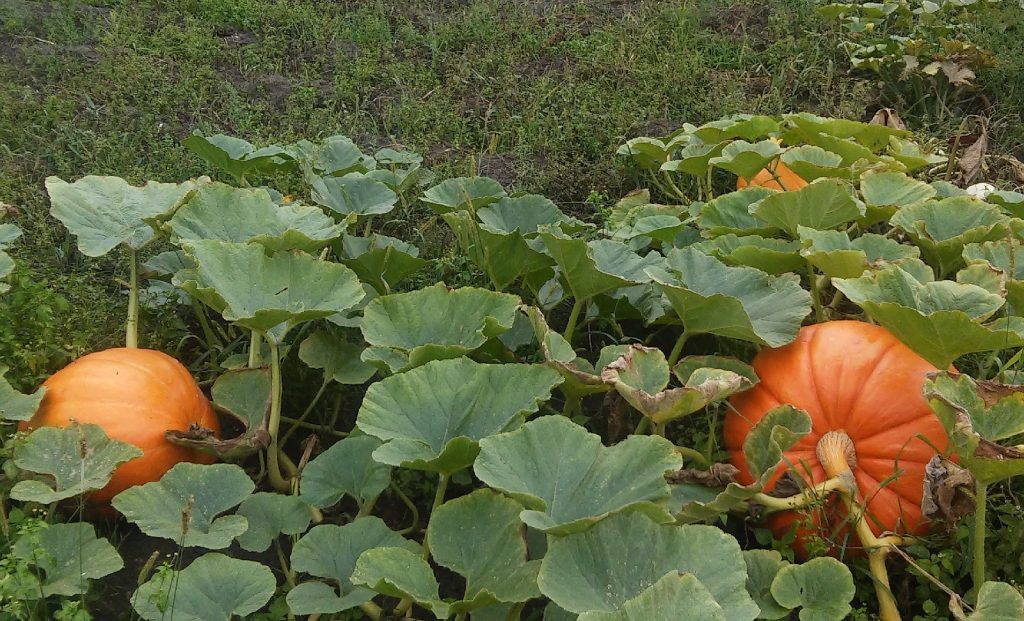
Broccoli
Companion planting has many benefits, from repelling pests to attracting pollinators. But another major plus is that it helps save on room. Broccoli plants grow upward. They don’t spread out too much. This can lead to a lot of wasted space in your garden.
Planting nasturtiums with your broccoli makes the best of the space your garden has to offer. Nasturtiums act as a ground cover, protecting the soil from the sun’s harsh rays and helping to lock in moisture. When planted as a companion, nasturtiums protect broccoli plants from the elements and repel hungry insects.
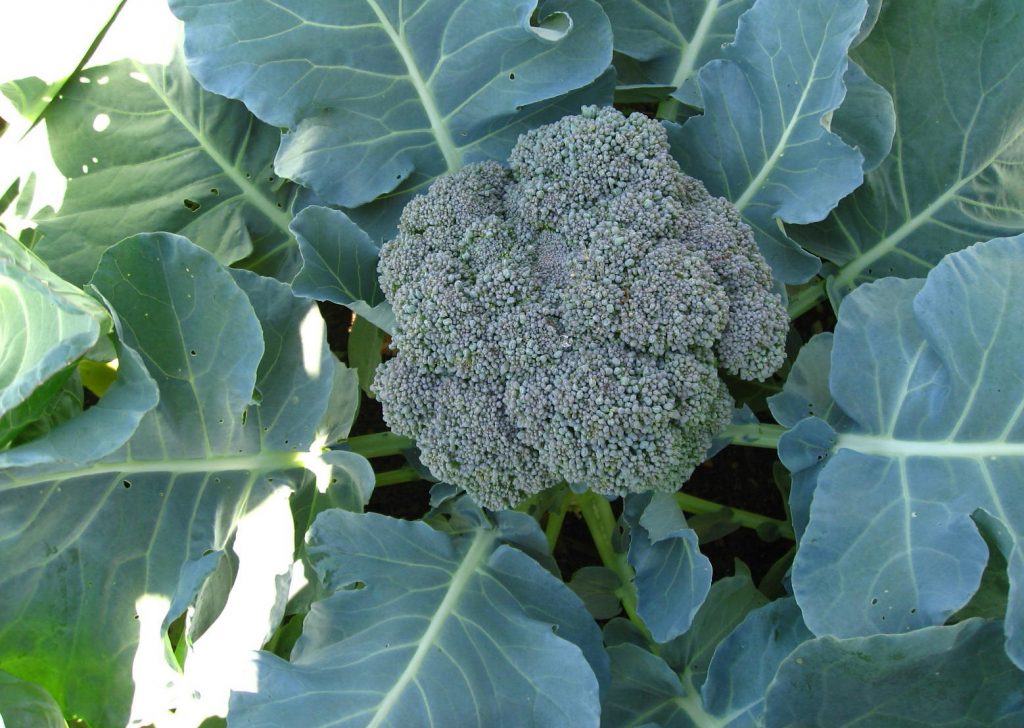
Carrots
Carrot plants like to grow deep into the soil, but they’re not powerful enough to break up hard ground. If the soil isn’t loose enough, your carrots may only grow a few inches in length. Nasturtiums, on the other hand, have strong root systems that can easily break through compacted soils. This makes them an ideal companion plant for carrots.
Grow nasturtiums near your carrots to aerate the soil and keep pests away. If the soil in your garden is particularly impenetrable, grow nasturtiums in a row first, and when carrot season arrives, you can uproot them and sow your carrot seeds in their place.
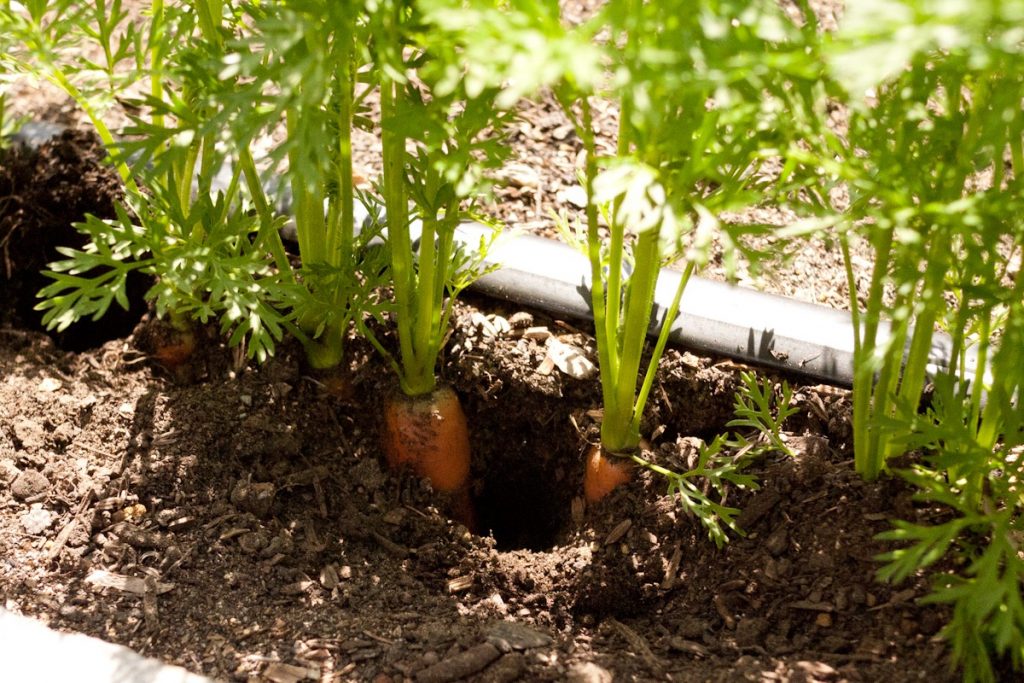
Cabbage
If you’ve ever tried growing cabbages, you know how much of a menace the whitefly can be. These bugs are tiny, making them difficult to spot on the cabbage plant’s huge leaves. They can easily hide in between the folds, where they lay their eggs so their young can feast on your cabbages before the plants reach their full size.
Nasturtiums repel those pesky whiteflies, keeping them off your cabbages, and the rest of your vegetables, too. Alternate rows of cabbages with rows of nasturtiums to thwart whiteflies and other cabbage-ruining pests.
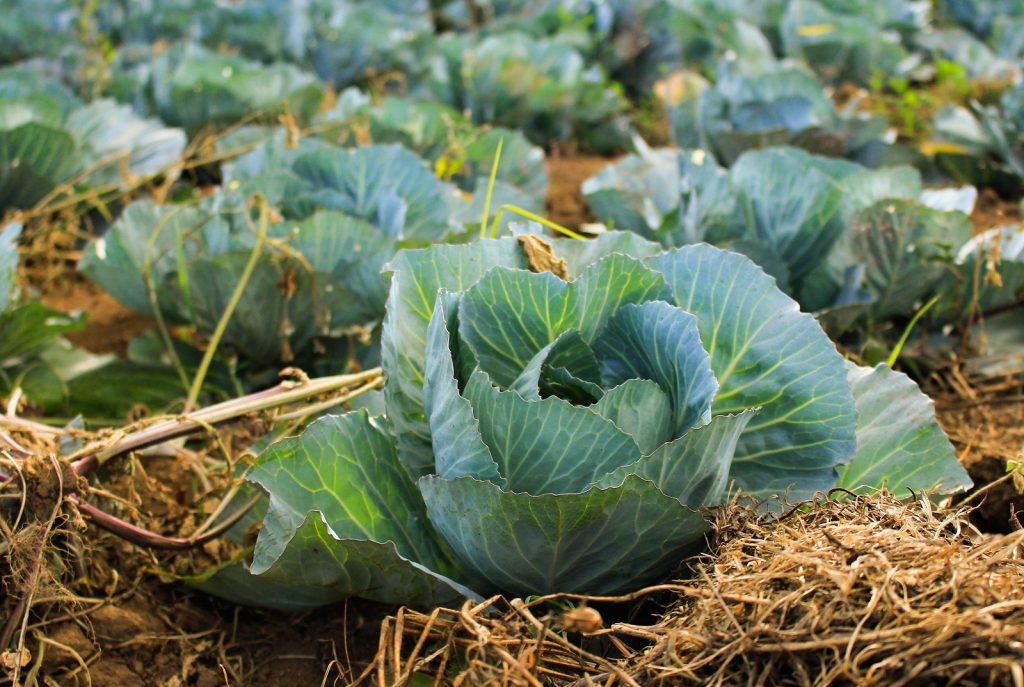
Kale
A relative of broccoli, kale also benefits from having nasturtiums planted nearby. Nasturtiums protect kale’s delicate new growth from Japanese beetles and cabbage worms, giving the plants plenty of time to mature.
Some insects find that nasturtium’s flowers and foliage are tastier than kale. Aphids, for instance, will often choose to feed on nasturtiums instead of kale, when given a choice. The more aphids your nasturtiums attract, the more ladybugs they can bring to your garden to feed on them, and other pests.
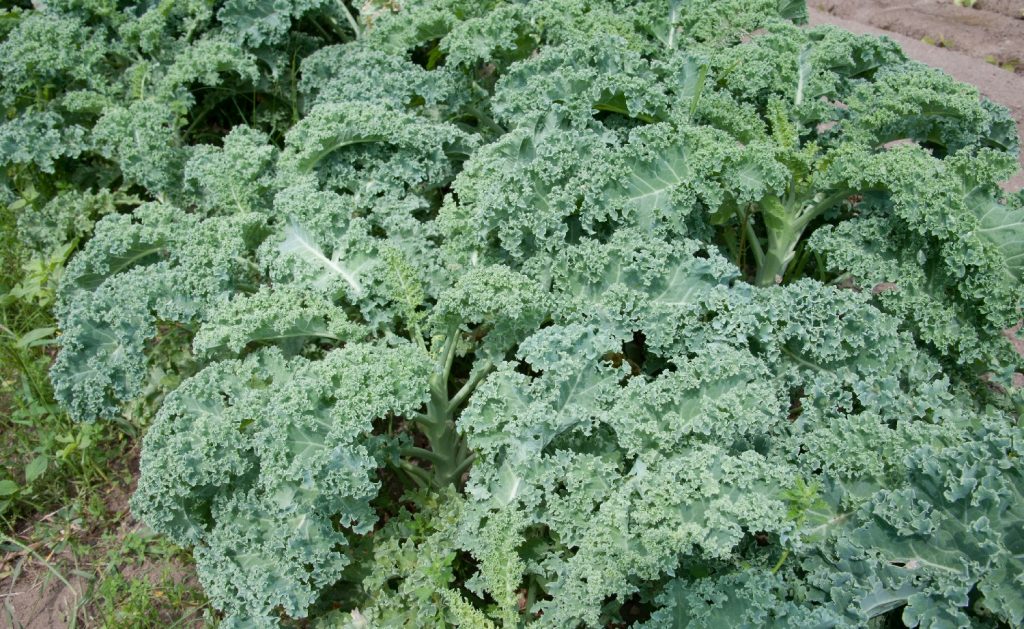
Beans
Nasturtiums love nitrogen-rich soil. It helps them produce lots of blooms. Beans are a great way to make the nitrogen in your garden’s soil easier for other plants to absorb. Growing these two plants together improves soil conditions and keeps pest levels to a minimum.
For best results, grow your nasturtiums and beans side by side in the same row. Alternate plants so there’s a good mixture of the two. Growing these two plants in the same space allows them to grow on the same trellis (or similar structure), so they’re easier to manage.
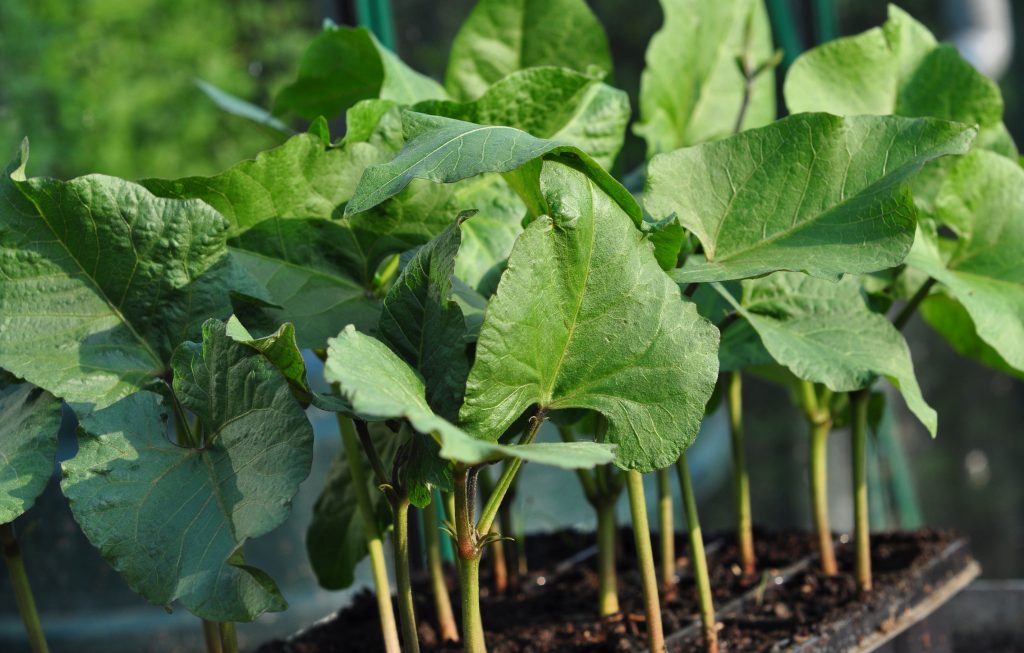
Melons
It’s fun to watch melons grow, but it’s incredibly disheartening to see them fall prey to squash bugs, grasshoppers, wooly aphids, and cucumber beetles. To prevent your melon plants from being consumed by greedy insects, use your watermelons and cantaloupes as nasturtium companion plants.
Nasturtiums don’t just keep bugs off your melon plants. They also work to improve their flavor. Additionally, these sprawling plants help break up the soil, making it easier for melon roots to reach the moisture they need to grow fruit.
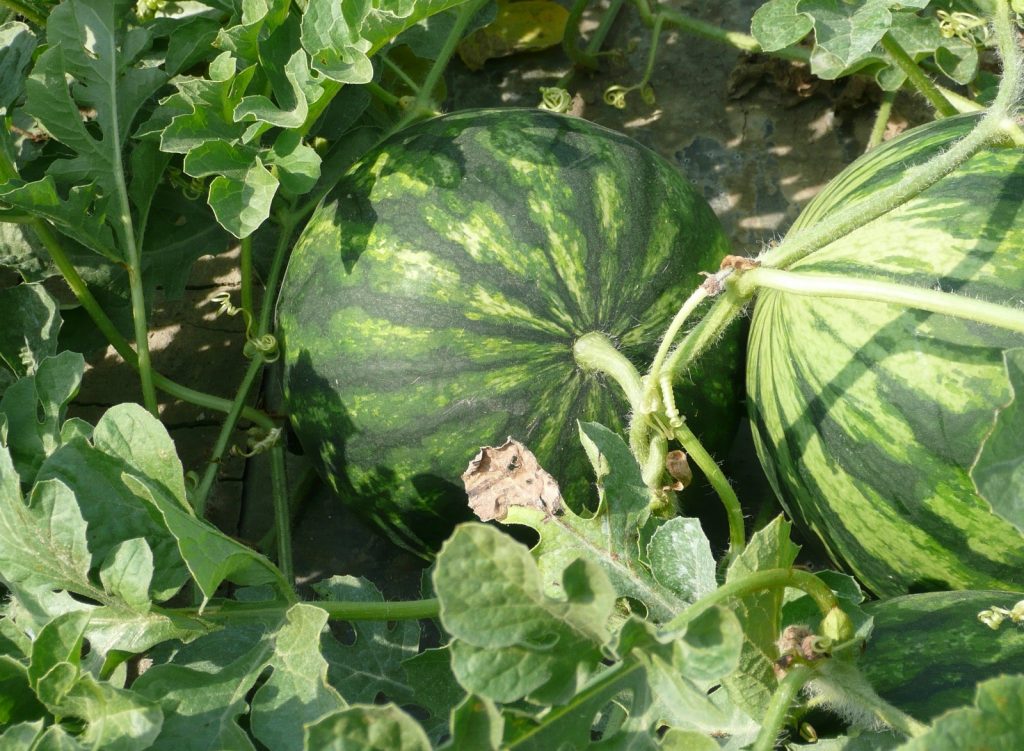
Cucumbers
Speaking of cucumber beetles, nasturtiums can keep these pesky bugs off their namesake, too. To use nasturtium companion plants for cucumbers, train your cucumbers to grow up a trellis. This leaves plenty of room around the base of the plant for nasturtiums to fill in. This will help draw the attention of cucumber beetles so they leave your cucumber plants alone
Lavender also works well as a cucumber companion plant, and it can help keep deer away from them as well. Grown together with nasturtiums, these flowers attract pollinators to ramp up cucumber production, all while repelling the bugs that prey on cucumber foliage.
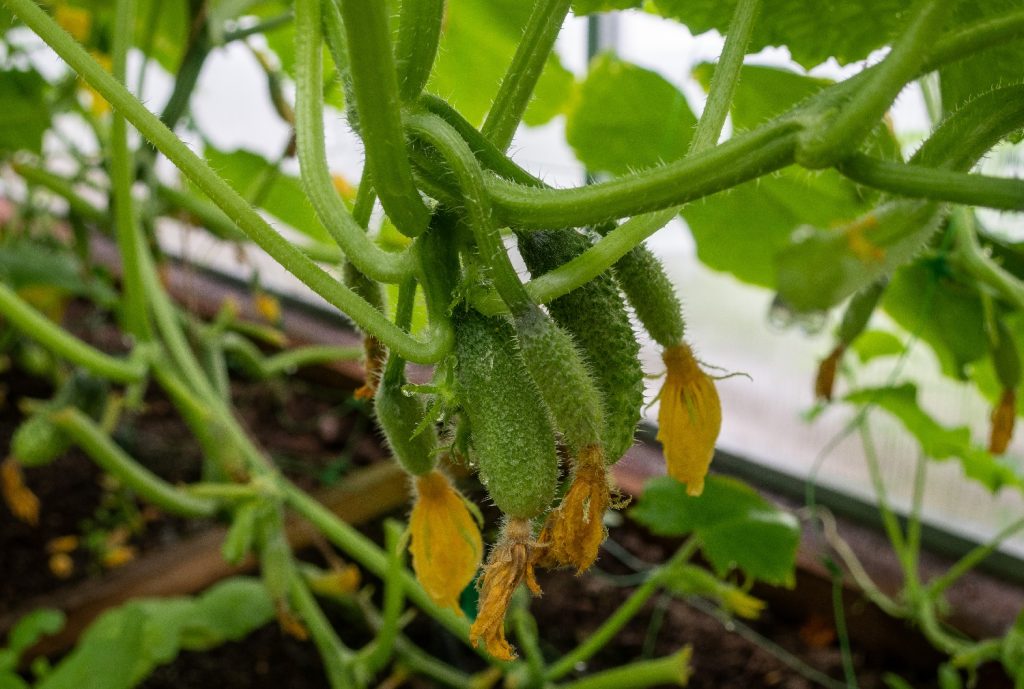
Eggplant
A member of the nightshade family, eggplants use a lot of nutrients, so they can hinder the growth of surrounding vegetables. Fortunately, nasturtiums love nutrient-deficient soils, so they make perfect companion plants.
Even when eggplants have leeched all of the minerals from the soil, nasturtiums continue to grow unabated, drawing aphids, stink bugs, and spider mites away from the eggplant’s fruits, and giving you ample time to harvest them for yourself.
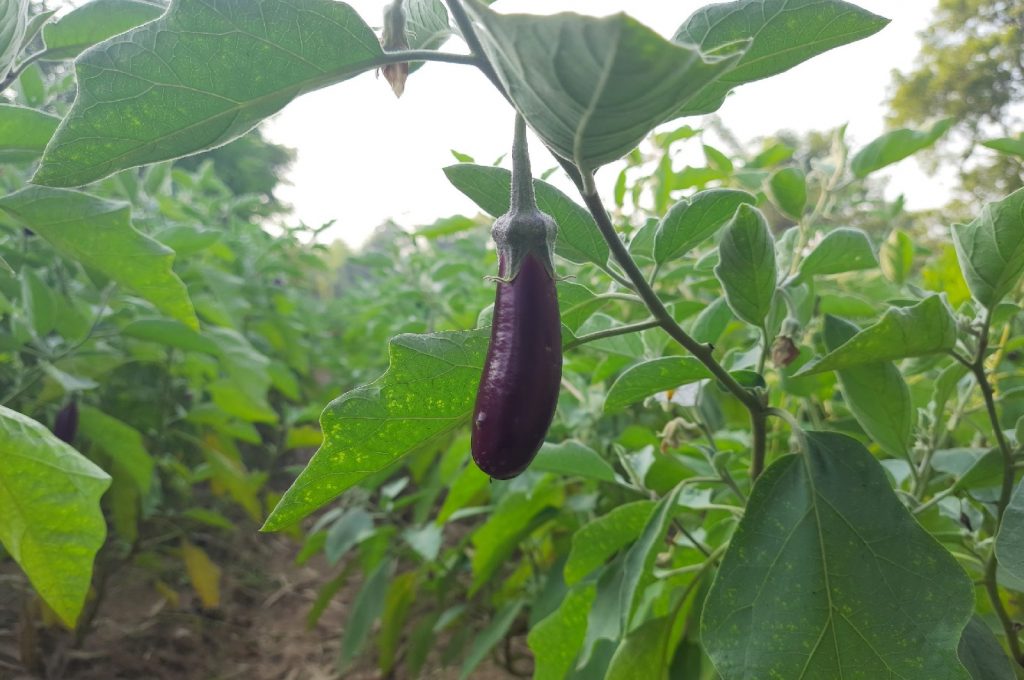
Fruit trees
Nasturtiums and fruit trees grow very well together. Mature fruit trees attract high-flying pollinators, like hummingbirds, drawing their attention to the nasturtiums. Likewise, nasturtiums attract the attention of low-flying pollinators, like bees and wasps, encouraging them to visit the blossoms of surrounding fruit trees.
Because nasturtiums require very little nutrition, they won’t hinder fruit tree growth. Keeping them near the base of your fruit trees helps the roots retain moisture, which improves fruit production and foliage growth.
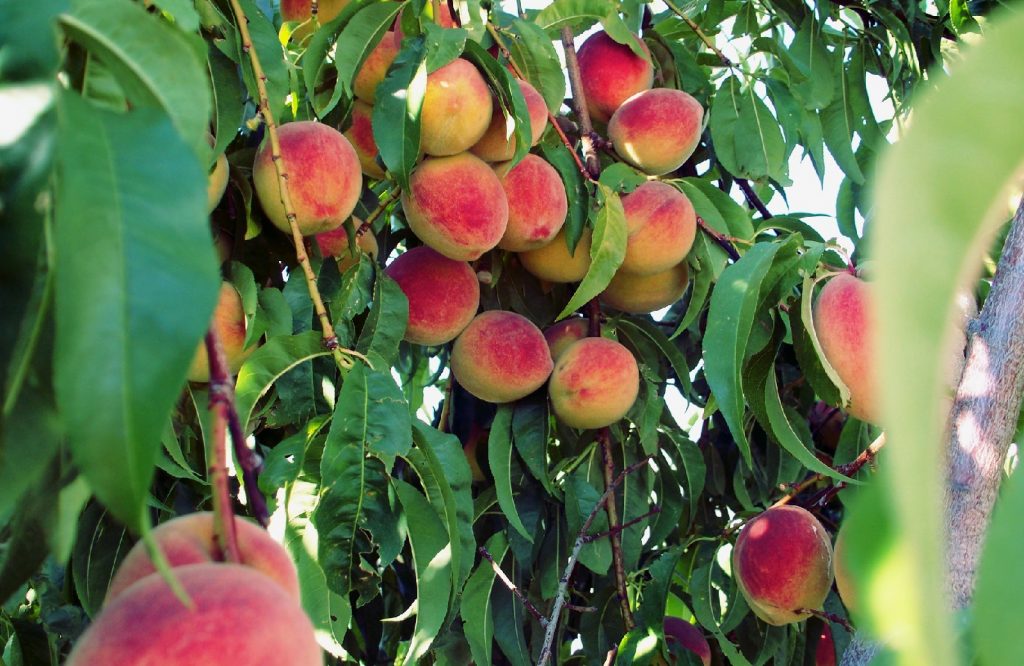
Rhubarb
Rhubarbs grow much like celery, sending long stalks straight up from the ground. We recommend planting your nasturtiums directly next to your rhubarb plants. Train your nasturtiums to grow up around them. Tomato cages work very well for this purpose. Place the cage over the rhubarb plant, and encourage the nasturtiums to vine around them. This is the best way to use nasturtiums as companion plants to keep pests off your rhubarbs.
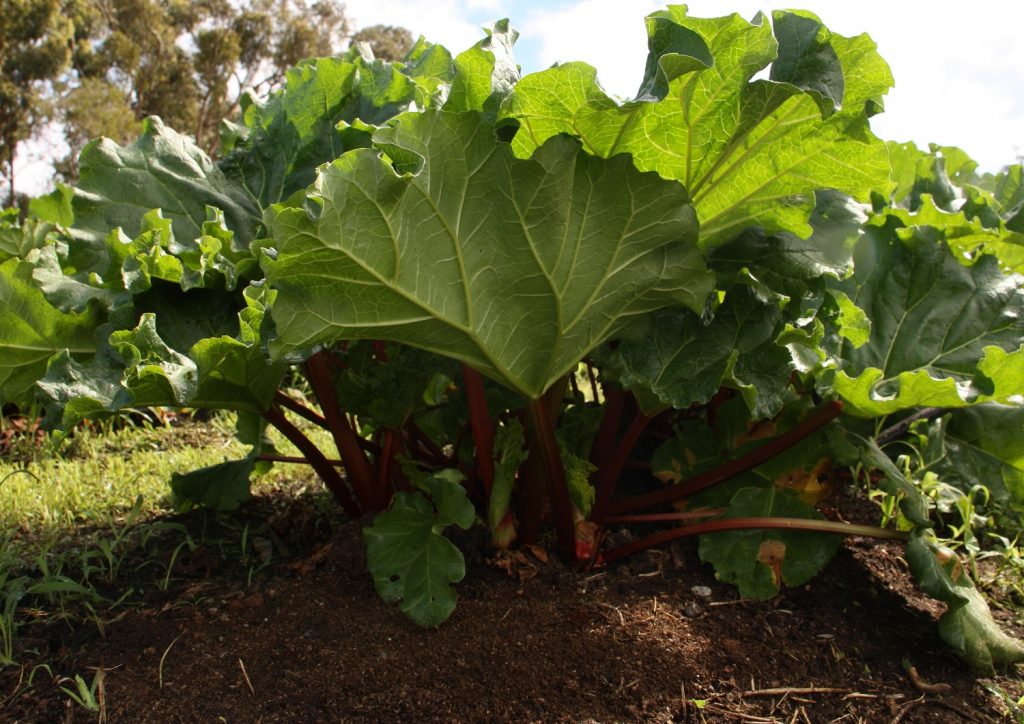
Should you plant nasturtium companion plants?
From small garden plants like kale to large fruit trees, there are many nasturtium companion plants to choose from. Growing this plant in tandem with your produce keeps harmful pests out so you have plenty of vegetables to bring in throughout the growing season.
